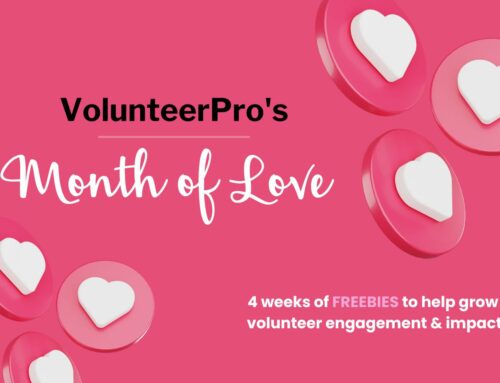![]()
Lately, we’ve been talking a lot about the role volunteer surveys can play in demonstrating volunteer impact. So, (happy day!) we’re providing you with 6 tools to help you measure that impact. 🙂
6 Freebies to Track, Report, & Improve Volunteer Impact
1) The Ultimate Volunteer Experience Roadmap
One way to deepen your understanding of the transitions your volunteers’ experience is to hone in on meeting volunteer needs at key touch points throughout their service journey.
Rather than a one size fits all approach, honing in on critical junctures can help you focus your energy on volunteer structures and support mechanisms that align with the volunteer’s current state of mind.
Use the roadmap to map your way to better volunteer retention.
2) My Scorecard for Volunteer Services
A Balanced Scorecard is a strategic performance management tool that can be used to identify, set, and manage key outcomes across a wide set of interests and functions. It was originally developed in the private sector, but has real value for nonprofits, too.
With our free template, you’ll be able to map out your very own balanced scorecard for volunteer outcomes that will demonstrate to the entire organization how the volunteer effort helps everyone move forward.
3) The Quick Guide to Amazingly Simple Volunteer Impact & ROI
Return on investment (ROI) is simply a ratio used to calculate the benefit an investor (or organization) will receive in relation to their investment cost. The higher the ratio, the greater the benefit earned. While ROI can’t account for everything, it is one powerful way to communicate volunteer impact and to begin a discussion about whether deeper investment is warranted.
Use the simple formula in this tip sheet to track and communicate the return on investment of volunteer services to key stakeholders.
4) How to Ask Smarter Demographic Questions in Your Volunteer Survey Tip Sheet
Demographics survey questions are important ways to understand the characteristics of a given population in a quantifiable way. Too often, however, demographic questions are presented in an insensitive way, or organizations don’t ask them for fear of offending their volunteers.
In this free tip sheet, I share my top my ten tips to developing mindful, sensitive, and informative questions that are less likely to offend volunteers and more likely to help you understand them better.
5) The Amazing Simple Volunteer Training Evaluation Worksheet
While understanding the impact of training may seem like a mystery, it really isn’t it. There is a simple model you can use to track the real outcomes of your volunteer training (beyond simply satisfaction) across four levels — reaction, learning, behavior, and results.
I this free worksheet, I share a quick and easy process that can get you moving toward better training evaluations in no time flat.
6) 25 Resources for Better Volunteer Impact Benchmarking & Program Development
When it comes to making tough decisions about which direction to take your volunteer strategy, it helps to know what other organizations are doing. I’ve assembled 25time-saving resources in one spot that can offer you valuable benchmarks and data points with which to compare your practice and results.
Use this swipe file as a quick jumping-off point for building your volunteer impact case.





